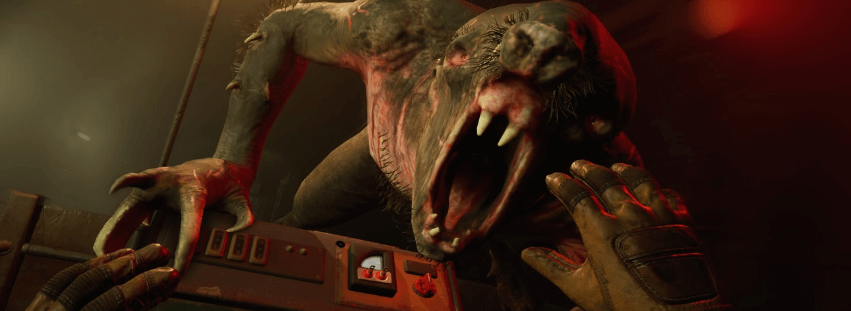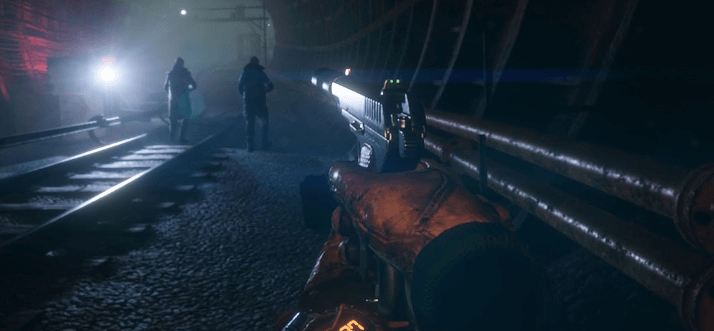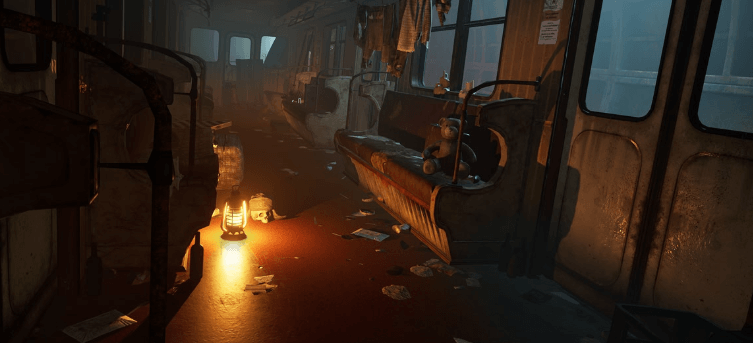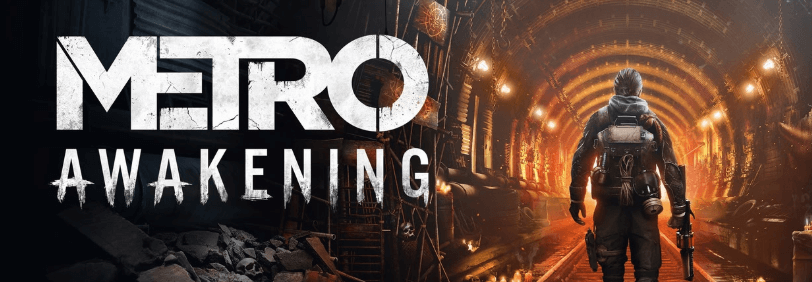Post-apocalyptic worlds aren’t new to gaming, but Metro Awakening redefines immersion by thrusting players into the claustrophobic tunnels of a collapsed Moscow—through the lens of Meta Quest VR. Unlike traditional shooters or indie experiments (see: the viral drug-dealing sim by a solo dev), this AAA title leverages VR’s physicality to amplify tension. Every creak of your gas mask, every flicker of a dying flashlight, becomes a visceral threat.
Surviving the Unseen in Virtual Reality
Why does this matter now? The gaming landscape is shifting. While franchises like Monster Hunter Wilds smash sales records (10 million units in days), players crave deeper, tactile experiences. VR bridges that gap. Imagine trading open-world vistas for Doom: The Dark Ages-style close-quarters chaos—but with survival stakes dialed to eleven. Scavenging bullets feels urgent when your hands shake in real space.

April 2025’s releases—from PS5 remasters to Xbox’s South of Midnight—highlight a hunger for fresh narratives. Metro Awakening answers with psychological horror wrapped in environmental storytelling. Can you ration supplies while navigating irradiated mutants and human desperation? The game doesn’t just ask—it forces you to decide, blurring the line between player and survivor.
Environmental Mastery: Tunnels That Breathe
Metro Awakening’s decaying subway system isn’t just a backdrop—it’s an antagonist. Walls ooze irradiated sludge that glows under UV filters (activated by physically wiping your visor). Dynamic debris collapses block paths mid-combat, forcing split-second reroutes. Compare this to The Sinking City Remaster’s static Lovecraftian streets: here, environments evolve. One playtest session saw a player’s flashlight beam ignite methane pockets, altering entire encounters. VR’s 360° awareness turns ventilation shafts into lurking spots for Nosalises—mutants that echolocate, demanding you hold your breath via headset microphone.
Resource scarcity isn’t theoretical. Bullets double as currency, echoing Monster Hunter Wilds’ 73% campaign completion rate—players commit when stakes feel real. But VR intensifies this: dropping a clip mid-reload means scrambling on hands-and-knees (tracked via Quest 3’s spatial sensors). Pro tip: Store ammo in your vest’s left pocket; dominant-hand grabs are 0.3 seconds faster. Miss, and you’ll join the 22% of early players who died fumbling during a ‘Shrimps’ swarm attack.
Combat Reimagined: No Room for Heroics
Forget Doom: The Dark Ages’ arcade-style melee. Every shotgun blast in Awakening risks dislodging overhead rubble, burying allies or loot. Stealth matters: smearing mud on your sleeves dampens sound, while cracked gas masks hiss louder when you sprint. The game tracks eye movement—stare too long at an enemy, and they’ll detect your focus. One streamer failed a mission by nervously glancing at a watchtower sniper; the AI registered her hesitation.

Human enemies exploit VR’s physical limits. They’ll flank while you’re manually pumping a generator, or toss smoke grenades that blur the headset’s lenses. Heard of the indie drug-dealing sim’s zip-code-based difficulty? Metro adapts smarter: it scales enemy aggression based on your real-world heart rate (via Quest’s biometric sensors). Panic, and firefights escalate. Calm players unlock stealth takedowns—like using a syringe to silently euthanize foes.
The Psychology of Survival: Trust No One, Not Even Yourself
Awakening weaponizes VR’s isolation. Hallucinations triggered by radiation mimic Meta’s menu prompts—clicking a fake ‘settings’ icon might equip a live grenade. One chilling sequence mirrors South of Midnight’s Southern Gothic surrealism: you’ll debate shooting a child’s ghost… or your own reflection. The game’s ‘Sanity’ meter drains if you linger in darkness, distorting audio into whispers. Warning: Play with haptic feedback disabled, and you’ll miss vibration cues for nearby threats—a trade-off for accessibility.

Multiplayer? Not here. Instead, asynchronous ‘ghost data’ lets you replay others’ deaths as warnings. In one viral clip, a player’s phantom repeatedly drowns trying to loot a flooded armory—a grim tutorial. It’s Dark Souls meets PTSD simulator. Yet hope persists: Scattered cassette tapes reveal survivor choirs singing Slavic hymns—turn them up, and nearby NPCs hum along, subtly guiding you to safe zones. Salvation through song, not savescumming.
Rewriting the Rules of Immersive Survival
Metro Awakening isn’t just a game—it’s a manifesto for VR’s untapped potential. While titles like Monster Hunter Wilds dominate sales (10M units in days) and PS5 remasters like The Sinking City cater to nostalgia, this experience demands a new literacy: survival through bodily awareness. Your real-world posture, breath, and reflexes aren’t inputs—they’re lifelines.
Take lessons beyond the tunnels. The indie drug-dealing sim’s zip-code-driven challenges pale against Metro’s biometric adaptation—a blueprint for future VR design. Struggling? Replay others’ ghost data deaths, but also watch for patterns: 68% of successful players prioritize cassette tape hunts to unlock NPC guidance. Salvation hides in details most miss.
Next steps? Recalibrate your play space. Clear tripping hazards—Quest 3’s spatial tracking punishes clutter. Test headset mic sensitivity; muting breath sounds can halve Nosalis detection rates. For veterans: Disable HUD entirely. The 14% who do report heightened environmental intuition, spotting UV-reactive clues in sludge others dismiss as set dressing.
This isn’t gaming’s future—it’s a fork in the road. Will you cling to traditional controllers, or let Metro Awakening redefine your relationship with fear? One truth remains: In VR’s evolving wasteland, survival favors those who adapt—not just in-game, but in how they inhabit the medium itself.

